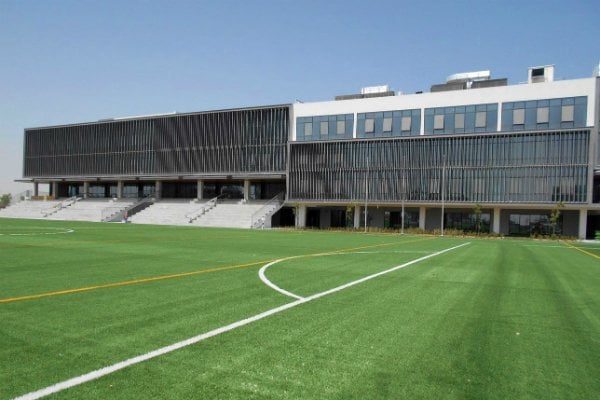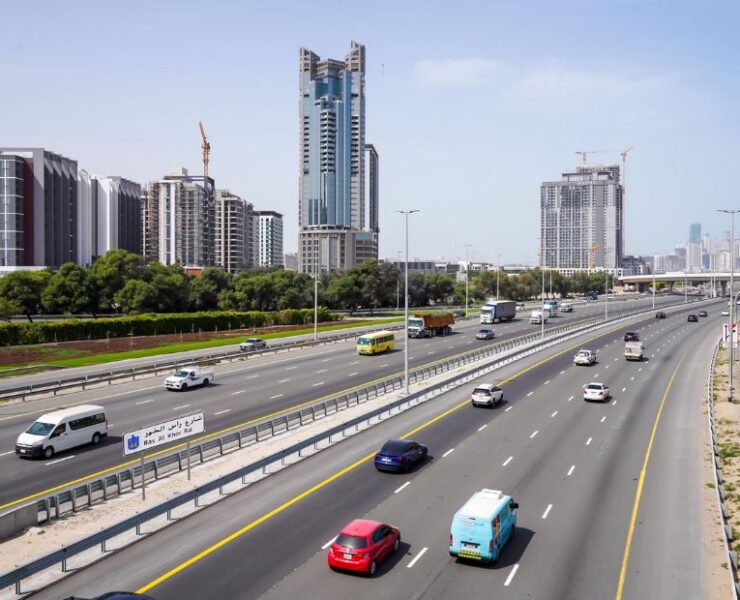KHDA issues list of protocols for reopening of private schools in Dubai
Over 100 safety measures entail wearing masks, regular sanitisation, temperature checks and maintaining adequate distancing

Dubai’s Knowledge and Human Development Authority (KHDA) has issued 100-plus protocols for the re-opening of private schools across the emirate in September this year.
According to the “Protocols for the Reopening of Private Schools in Dubai” circular on the education regulator’s website, schools must adhere to the 118 protocols issued under 15 categories, to reopen for the academic year 2020/21.
A few of the conditions issued for school reopening include:
A. Entry, Pick up, and School Visit
- Modes of thermal screening (individually or by installing the relevant technology) should be present at the entrance of the school. Children who are taking the bus, should get scanned for their temperature before getting onto the bus. Anyone with a fever of equal to or more than 37.5˚C should not be allowed entry.
- The class teacher is responsible to refer students with Covid-19 symptoms such as cough, body aches, fatigue, shortness of breath, sore throat, runny nose, diarrhea and nausea, and headache, to the school nurse for further screening as per the guidelines.
- Teachers and students older than six years of age are required to wear face masks at all times.
- Staff will be discouraged from exiting the school during the day, but if they do for emergency purposes, they are requested not to return to the premises unless they have fully sanitised and changed their clothes upon return. They will also undergo thermal screening before entry.
- Only one family member or a guardian is allowed to enter the school facility for drop off/pick up his/her child. People with compromised medical conditions, including the elderly, should not come for drop off and pick up.
- The school should implement a staggered entry and exit procedure to eliminate overcrowding and to maintain two metres physical distancing in high traffic areas.
B. Screening and Contingency/Emergency Plan
- If a stable case of illness is detected amongst visitors or staff presenting Covid-19 symptoms such as fever (equal to or more than 37.5˚C), cough, body ache or fatigue, shortness of breath, sore throat, runny nose, diarrhea and nausea, headache, or loss of sense of smell or taste, DHA hotline number 800-342 should be contacted by the school’s designated H&S officer.
- In cases of emergencies, such as having unstable cases amongst staff, students or visitors, the school should immediately contact 999 or 997.
- A health and safety designated staff should be identified and assigned to handle any emergency situation, follow up and monitor the implementation of health and safety procedures, and conduct all necessary trainings for students and staff. This person is also responsible for the designated isolation room within the school premises.
- If a child/teacher/staff begins to show symptoms of Covid-19 while at school, they must get isolated instantly, and the parent/ guardian of the child to be notified immediately and the patient should be referred to the hospital to take the necessary action. The patient should not return to school until the PCR result is obtained. If the result is negative and there is a clinical assessment of a probable Covid-19 case, the patient should complete a 14-day quarantine. If the result is negative and there is no clinical assessment for a probable case, the child can resume schooling so long as they are symptom-free.
- If the result is positive, the traced contacts of the patient, including teachers along with the classmates of a student, or colleagues are all considered close contacts (Anyone who spent more than 15 minutes in a proximity of 2 metres with the positive case, from the day of symptoms onset, or the day of the positive PCR test). They should all commence the 14-day quarantine counted PCR from the day of the positive test, or from the day of the onset of symptoms if ascertained by the clinician.
C. Monitoring Attendance and Contact Tracing
- If staff, guests and/or students were confirmed positive according to a Covid-19 PCR test by an accredited facility, they are not to return unless they are granted a clearance certificate by DHA stating that they are discharged from isolation.
- The school must maintain adequate records of its staff/guests/members/students, including names, telephone numbers and visit dates, to assist if contact tracing becomes necessary. And to maintain accurate work records of its staff for contact tracing purposes.
- The school should abide by the contact tracing procedures, by providing DHA with all records needed to trace potential contacts of the confirmed Covid-19 cases.
- Upon the onset of the academic year, the school should collect health and travel declaration forms from all students and staff. The template of the form can be developed by the school.
- A policy of “staying at home if unwell” for students, teachers or school staff with symptoms should be enforced.
D. Hygiene
- Common areas in the school (i.e. toilets, pantry, waiting areas, etc.) should be cleaned and disinfected every hour or after every use. This also applies to frequently used areas/surfaces such as door handles, dining tables, seat rests, elevator keys, etc.
- Total sanitisation of the school prior to the official opening is necessary.
- Daily clean up and sterilisation of all areas and surfaces of the school premises and effective sanitisation post completion of each day to be conducted and cleaning process to be in-line with Dubai Municipality guidelines for schools.
- Clear guidelines should be set for security staff and those who are cleaning the school facility to ensure they follow the right measures such as wearing gloves and masks while cleaning.
- Encourage strict hand washing regime and adequate hand washing breaks for children. Assist children with hand washing, especially younger children who cannot wash hands alone.
- Ensure hand sanitizers are distributed across the school premises, away from younger children’s reach. The sanitiser should be approved by Dubai Municipality.
- Staff and children’s bags and shoes are encouraged to be sprayed with sanitisers upon arrival to school.
- In classes where taking off shoes is required, a shoe rack should be designated outside at the class entrance rather than taking them inside the classrooms.
- Frequently used electronic devices should get disinfected after each use (i.e. tablets, computers, etc.).
- The school should encourage a paperless strategy and elevated use of technology in the educational provision to minimise contacts.
- Measures should be taken to ensure that students with certain disabilities or learning difficulties receive adequate supervision and support when needed.
- Ensure that all staff and children:
- Frequently wash their hands with soap and water for 20 seconds and dry thoroughly
- Clean their hands upon arrival at the setting, before and after eating, and after sneezing or coughing
- Are encouraged not to touch their mouth, eyes and nose
E. Restrictions
- All staff, visitors, and students over the age of six are mandated to wear masks at all times inside the school from entry. Non compliance will lead to denial of entry to the school facility.
- Children over the age of six (all students in Grade 1/Year 2 and above) should wear masks. Students and staff with medical conditions are exempted from wearing a mask with a medical certificate only. Masks can be taken off during eating or during high intensity physical activities.
- Staff who are in direct contact with children are encouraged to wear transparent masks/face shields to enable lip reading, and facial expression.
- Sufficient stocks of masks, gloves and sanitisers must be available and special designated bins to throw used items (as recommended by relevant governmental authorities).
- Registration should be encouraged to happen online. If truly needed, parents/guardians visits for registration should be based on an appointment system. It shouldn’t be allowed during drop-off, pick-up, and break time to avoid having the visits during children crowding time.
F. Set-up / Physical Distancing Arrangements
- Ensure the two metres distancing measure is maintained in all common areas, service desks, etc. where different groups of students, staff and visitors are mixing.
- Classroom area should support sufficient room for groups to maintain physical distancing of at least 1.5 metres per child in each classroom provided everyone wears a mask.
- Use of outside space should be encouraged:
o for exercise and breaks
o for outdoor education, where possible, as this can limit transmission and more easily allow for distance between children and staff
o outdoor equipment should not be used unless the setting is able to ensure that it is appropriately cleaned and sanitised between groups of children and young people using it, and that multiple groups do not use it simultaneously. - Stagger the use of staff rooms and offices, their entry and exit, and the use of their pantry, to limit occupancy.
- Create visible markers on the floor to indicate appropriate spacing.
- Contactless payments to be encouraged, yet cash payments are allowed.
- Vending machines, pantries and pre-packed food and beverages are allowed, in the condition that they follow necessary guidelines for the sector [only disposable containers, frequent sanitisation of machines, and pantries items, maintaining two metres between the tables].
G. Educational Provision
- Student ratios will vary depending on the size of the classroom. The school will have the liberty to decide on the number of students per class as long as a safe distance of at least 1.5 metres per child or person is maintained.
I. Shared Resources/ Materials
- Use of soft toys and toys with intricate parts or that are otherwise hard to clean should be avoided.
- All equipment in classrooms such as toys, books, scissors, pens, pencils, crayons, arts and crafts materials and messy play resources as well as roleplay and other materials should be sanitised after each and every single use where possible.
- Students and teachers must bring their own exclusive stationary items, devices or gadgets (i.e. laptops, tablets, headphones, etc.). Student should not share their stationery. If the children need a supply of stationery, it should be done by the teacher via proper disinfection.
J. Food and Beverages
- Food catering at this stage should not be restricted. The school can provide catering services provided it is based on pre-packaged food, while following Dubai Municipality guidelines related to catering services. Families are encouraged to supply food and beverages for their children along with their own plastic safe utensils. Staff must also bring in their own food and drink. Teachers should supervise to ensure that children do not share food. Face shields are encouraged during meal breaks when masks need to be temporarily removed.
- Buffets or other forms of meal gatherings are not allowed.
- Water dispensers are not allowed, the school may offer sanitised water bottles.
In June, the UAE also announced a list of guidelines on the reopening of educational institutions across the country later this year.
Read: UAE issues guidelines on reopening schools, universities in September 2020
In March, the UAE implemented remote learning programmes across all schools and universities in the country in what was seen as a precautionary measure to combat the spread of the Covid-19 infection.
Read more: Private schools in Dubai ready to open campuses in September
The summer vacations for public and private schools that follow that Ministry of Education’s curriculum will begin on July 2.
Read: UAE summer school holidays and reopening dates announced




